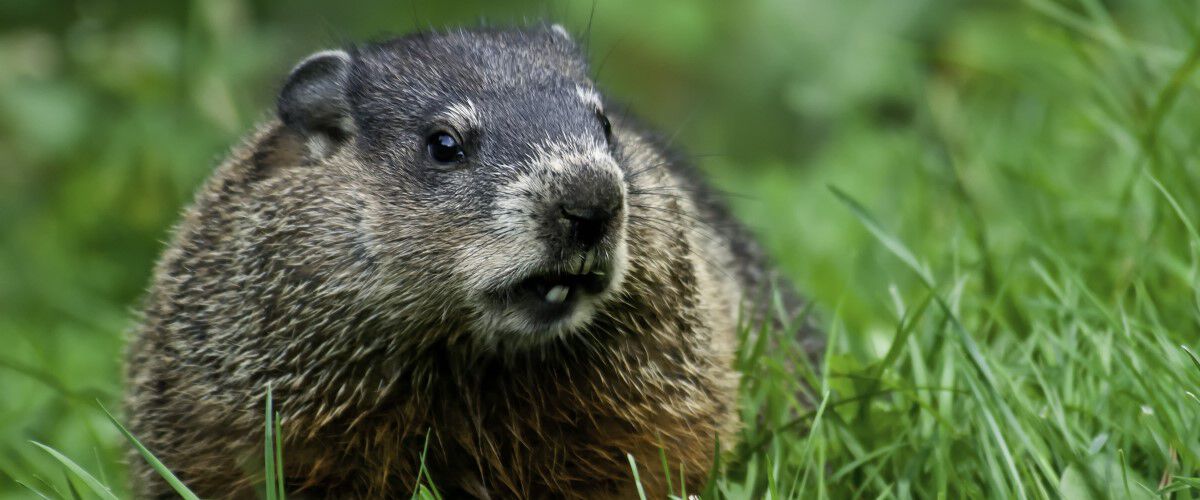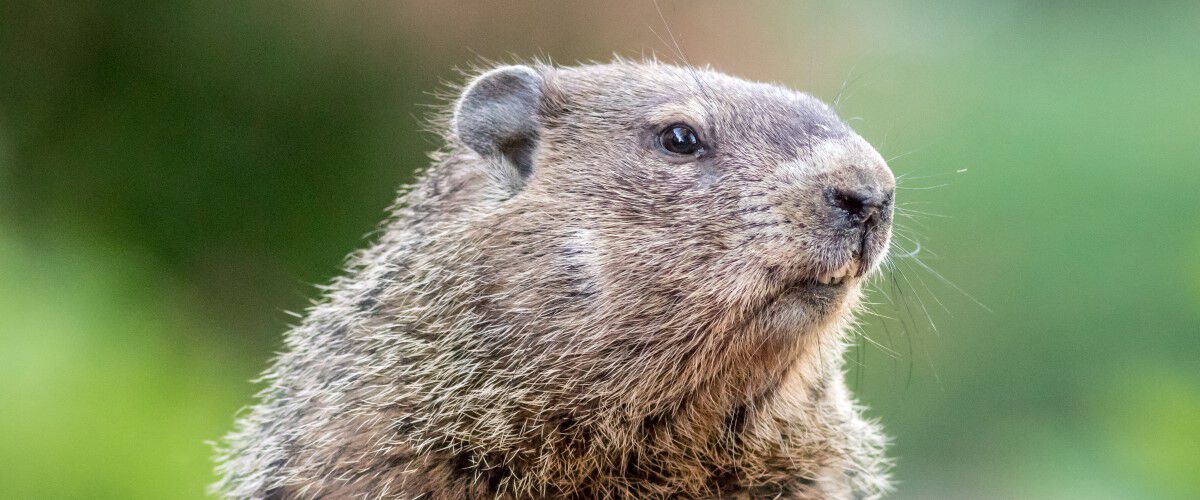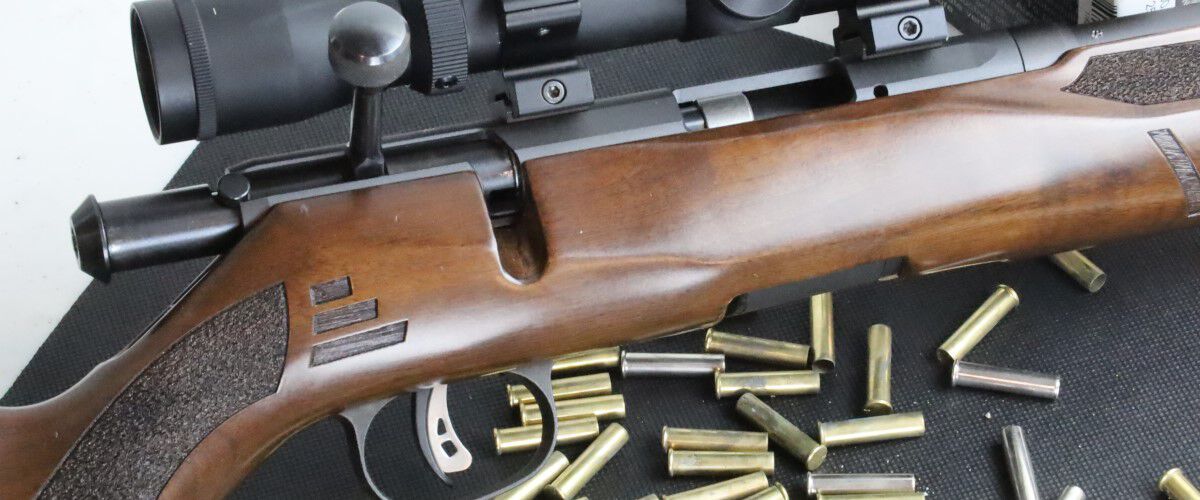Groundhog Day
By Brad Fitzpatrick

Marmota monax has many names. In parts of this rodent’s range, which stretches from the Atlantic provinces of Canada across the Midwest and into Alaska, it is known as the groundhog. In other parts of the country, it goes by woodchuck, whistle pig, thickwood badger or land beaver. By any name, it has long been a favorite target of hunters.
When I was a young man, shooting groundhogs was a full-time job. Local farmers (including my grandfather) were always seeking out shooters to help them control populations on their properties. Groundhogs are superb engineers, digging complex burrows with interconnected chambers used for raising offspring, avoiding predators and wintering. They need a wintering chamber because they are true hibernators. Unlike bears, which often wake during the winter months and might even exit their dens, groundhogs remain in a state of torpor that lasts until spring. Oftentimes when the groundhog emerges from its den, usually in April or May, it has lost up to half its body weight. They’re heaviest in the fall when they’ve been packing on weight for hibernation, with mature males weighing up to 11 pounds.
Food Sources Are Key
Groundhogs can thrive in a wide variety of habitats so long as they have food and earth for excavating. Because their four incisors continue to grow, groundhogs must eat fibrous foods to wear down their teeth, so the bulk of their diet is made up of rough plant materials. These animals eat berries, grasses, young trees, acorns and a wide range of agricultural crops. Their penchant for soybeans, wheat and other crops puts them at odds with farmers.
The key to successfully hunting groundhogs is to locate their food sources and burrows. Oftentimes this doesn’t take long. As you’re scouting areas or simply walking near the woods, you’ll see the animals running from food to their burrow. Groundhogs prefer open ground with plenty of feed near suitable burrowing habitat, like where open fields and forests intersect. When you’re hunting agricultural fields, pay close attention to the perimeter of the plowed land close to brushy cover or standing trees. Groundhogs are the largest members of the squirrel family in the eastern United States, and while they don’t regularly climb trees (although they can if threatened), they tend to hang around habitat edges.

As many landowners know, groundhogs also have an irritating habit of burrowing under buildings, and their excavation can cause long-term problems. In fact, groundhog burrows can cause foundations to collapse, which does little to endear them to landowners who are already losing crops to these voracious foragers.
It’s usually relatively easy, then, for hunters to obtain permission to hunt groundhogs. But successfully hunting them is usually a test of patience. When spooked, groundhogs run into their underground burrows and might stay there for hours, only exiting once they feel the threat is gone. It’s also important to survey the area surrounding the opening into which the groundhog vanished since a groundhog’s interconnected network of underground burrows might have as many as five exit points.
Groundhog Guns
In many areas, hunters prefer hot .22 centerfires for chasing groundhogs—rounds like the 223 Rem., 22-250 Rem., 224 Valkyrie and even the hot 220 Swift. You can also certainly hunt groundhogs with a 6mm like the 243 Winchester or 6mm Creedmoor, but in many areas long shots and hot loads are required. In fact, when hunting groundhogs in areas where there are houses nearby the loud crack of a hot .22 can annoy the neighbors. I still have a heavy-barreled 22-250 for woodchucks, but I haven’t used it to hunt them in some time. That’s because most of the shots I take are near outbuildings and in pastures, and often I’m within 50 yards of the animal.

In place of the 22-250, I’ve primarily switched to rimfires. A 22 LR with a hot, expanding bullet like CCI’s Mini-Mag SHP or Stinger works well on shots that are fairly close when using rifles that are highly accurate. To my mind, however, the 17 HMR and 22 WMR are the ideal groundhog rounds for most hunting at or under 100 yards. Neither of these rounds create the level of noise you’ll encounter with a hot .22 centerfire and yet they are accurate enough to shoot precisely at moderate ranges and pack enough energy to take down even the largest groundhog.
My go-to gun these days is a Savage B22 22 WMR firing CCI’s Maxi-Mag 40-grain bullet at 1,875 fps. That round has plenty of energy for clean kills on groundhogs and extends my effective maximum range beyond 100 yards. What’s more, rimfire ammunition is considerably less expensive than centerfire ammo.
Some hunters have never considered groundhog meat as table fare, but when properly prepared it can be delicious. These animals generally eat a diet of agricultural crops, plus they’re members of the squirrel family and taste similar. Young groundhogs are particularly good to eat. This is all the more reason to use a precision rimfire because careful shots dispatch the animals quickly without destroying much meat.
Every Day Is Groundhog Day
There’s no reason to only celebrate Groundhog Day on February 2. Hunting groundhogs is a great tune-up for the fall season and even landowners who don’t allow deer hunters are usually more than happy to allow groundhog hunters on their property. If there’s a young hunter in your house who’s not quite ready for a long sit in the deer stand, chasing groundhogs at harvest time is a great segue into big game hunting. But even experienced hunters will enjoy an afternoon spent waiting for these wily animals to show themselves and offer a shot.